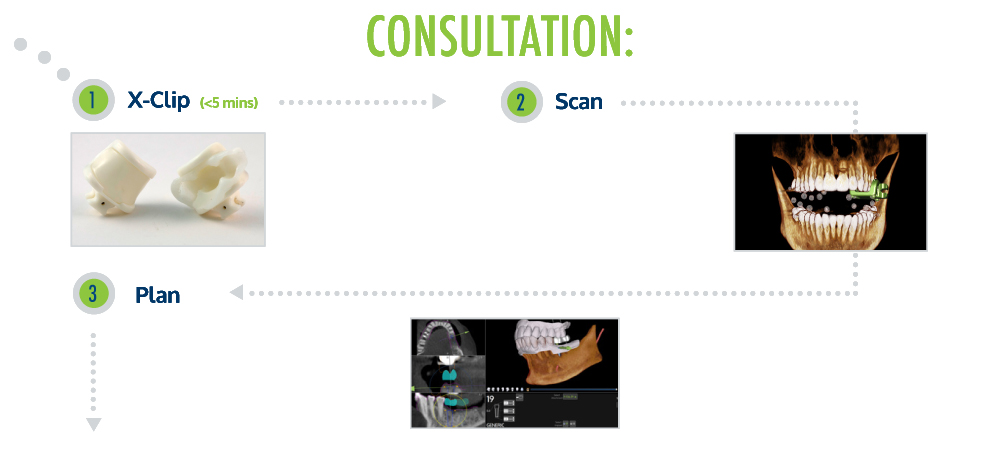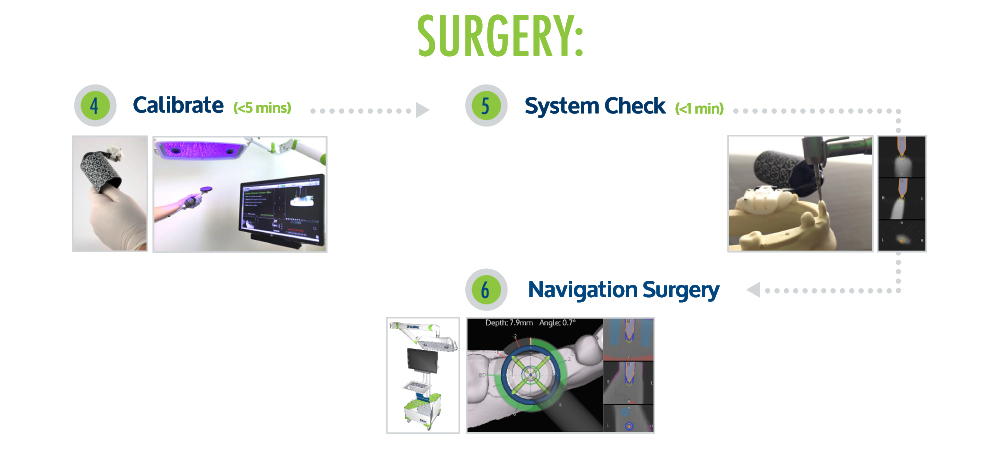
X-Guide Implant Navigation
Traditional dental implant placement can be long, drawn-out surgeries. With the X-Guide Navigation System, we are able to place implants with greater efficiency and precision. The navigation system provides a real-time map of where the implant is at all times, allowing for unprecedented accuracy in implant placement.
Benefits include:
- Less invasive surgeries
- Decreased chair/appointment time
- Increased patient comfort
- Decreased recovery time
- Decreased risk of incorrect implant placement
Dental implants have become the preferred method of tooth replacement for several important reasons:
- No other treatment option prevents the bone resorption/deterioration that occurs when a tooth is lost or removed.
- This is the only tooth replacement option that preserves the adjacent teeth, as opposed to cutting them down to place a bridge or hooking a partial denture to them.
- Dental implants have by far the best long-term success rates of any treatment option – and this has been documented in the scientific literature for over four decades.
- Since dental implants are designed to last a lifetime, there is rarely a need for additional treatment. With other forms of tooth replacement that need to be replaced every 5 to 10 years, additional dentistry is almost always necessary in the future. As a result, dental implant treatment is the most cost-effective option long-term.
A surgical and prosthetic evaluation and consultation with one of our doctors at Penn Dental and Implant Center will determine whether you are a candidate for dental implant treatment and whether additional procedures, such as bone grafting will be necessary.
Implant Placement
Your doctor will administer anesthesia to prevent any sensation during surgery. Utilizing a gentle technique, your doctor will prepare the surgical site and place the dental implant in the proper position. A small cover screw will then be attached to the implant. A temporary replacement tooth (or set of teeth) may be inserted following surgery. The implant will be left undisturbed for a several weeks to a few months, to allow the bone to remodel around the implant.
Abutment Attachment
Replacement Teeth
HOW THE X-GUIDE WORKS



